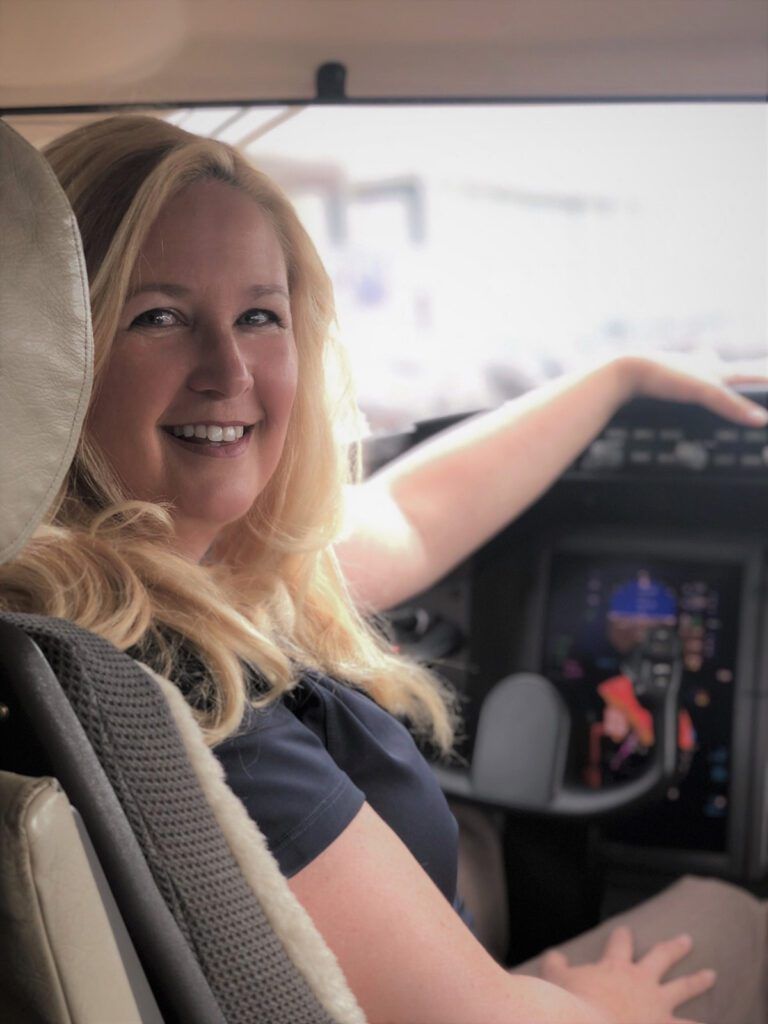SPONSORED CONTENT — In the high-flying world of single-pilot corporate aircraft, jetAVIVA brokers Mickea Smith and Denise Wilson are standouts. The Fort Worth-based Smith is an aviation professional with commercial, multi-engine, seaplane, and instrument ratings, and she’s within an eyelash of bagging her 525-type rating.
Denise has been flying professionally for 25 years, and holds type ratings in eight different jets, including the CE-525S. Highly experienced in the turbine world, Denise founded a charter company, maintenance company, and built an FBO.
Mickea Smith and Denise Wilson are the real deal, in other words, and they are now focused, laser-like, on Cessna Citations. Mickea handles the CJ, CJ1 and CJ1+ line, and Denise concentrates on the M2, CJ3 and CJ3+ Citation variants. As AVweb rolls out its new classified advertising section this week, we wanted to learn more about this intriguing market segment, so we called the experts.
First, Some Context
A half-century has elapsed since the Citation I rolled out of Cessna’s manufacturing facility in Wichita Kansas. The airplane hit the sweet spot for many corporate flight departments in terms of speed, handling, endurance, and price point. The CitationJet, or CJ, line was introduced in 1993, burnishing the important element of a single-pilot operation, which adds efficiency for the right kind of owner willing to focus on well-structured training.

“A single-pilot CJ1 adds simplified systems through better integration of autopilot, flight management systems and the flight director,” says Mickea. “Still, the CJ1’s handling is docile enough that it’s a straightforward step-up from high-performance multi-engine pistons or turboprops,” she says.
“It’s for pilots who’ve always dreamed of owning and flying his or her first jet,” she says, then taps the brakes on any inflated expectations.
“There will be a minimum of 25 hours of SOE (Supervised Operating Experience) issued as a requirement by the FAA if the CE-525S is the pilot’s first type rating. Ultimately, the minimum requirements for single-pilot operation will be dictated by your insurance company, and that will be largely dependent on the pilot’s experience level,” she says. The Collins Pro Line-21 found on CJ1s is still “business-jet avionics,” she says, and will require some time to master.
Avionics aside, a major selling point of the CJ1 series is the line’s Williams FJ-44-1A turbofan, with 1,900 pounds of takeoff thrust and a book range of 1,485 nautical miles.
“In terms of current market, let’s look at the numbers,” says Mickea. “From June last year to June this year, there were 29 sales of CJ1s worldwide. There are only seven currently on the market, and the average price has increased 53%.”
“With the softening of the stock market, there is talk of a downturn in CJ1 sales, but the numbers haven’t reflected that yet. However, it’s a dynamic market, and it changes daily. Right now, a used CJ1 will fetch between $1.6 and $2.2 million. As inventory slowly creeps back, we don’t expect any further appreciation, and now is the time to sell in order to maximize sale price.”

The M2 Gen 2 With G3000
Likewise, Mickea’s colleague Denise Wilson has seen upward pricing pressure on the Garmin G3000-equipped Cessna M2 twinjets, which has the performance-enhanced Williams FJ-44-1AP engines.
“Future M2 pricing is hard to predict lately, but we’ve seen earlier-serial-number aircraft increase from $2.8 to $3.0 million to near $4.0 million, and newer pre-owned M2s have topped out around $5.2 million over the last year. There are more buyers than sellers, and that has brought the price up significantly. However, as more sellers decide to take advantage of today’s sales prices and more inventory becomes available, we expect to see less price appreciation in the coming months. Now is the time to sell if you want to maximize your sales price.”
Still, Denise says, even owners who are highly leveraged in the stock market aren’t talking about selling, unless it’s to capitalize on selling for more than they bought their aircraft. jetAVIVA is also seeing a steady influx of new-to-aviation, high-net-worth individuals entering the used-jet market.
Bottom line: If you’re a seller, as we look down the barrel of high inflation and a stock market sell-off, you may not see those formerly high prices for a while. If you’re a buyer, we happen to know a couple of skilled jet brokers who would like to hear from you.
The AVweb classified system rolls out soon. You’ll find single-aircraft listings, multiple broker listings, aviation jobs, and listings for parts and services. Early listers get the first two months free, and the clock starts June 30. Watch for more analyses of aviation market segments in AVweb’s five-times weekly Flash.

































